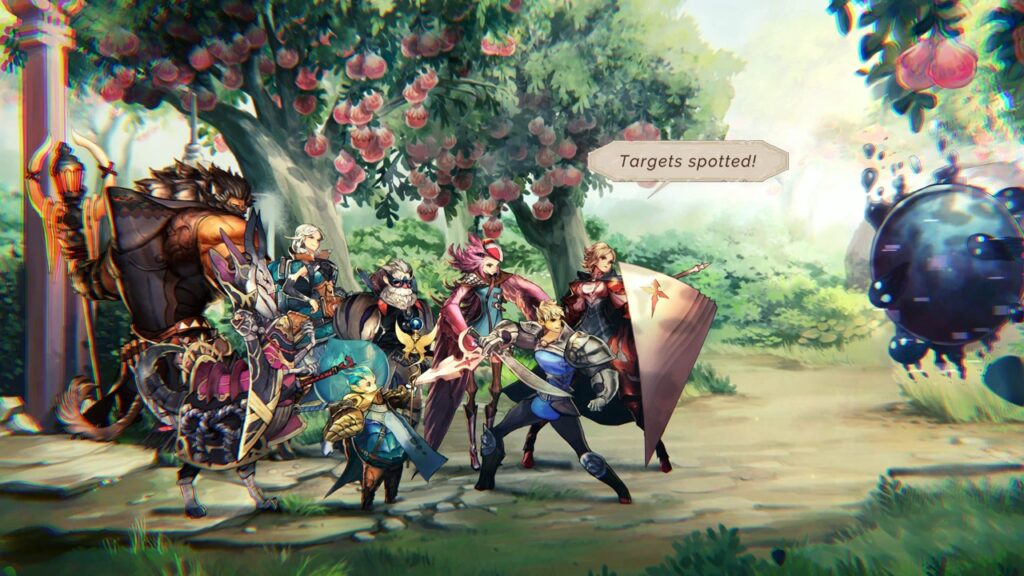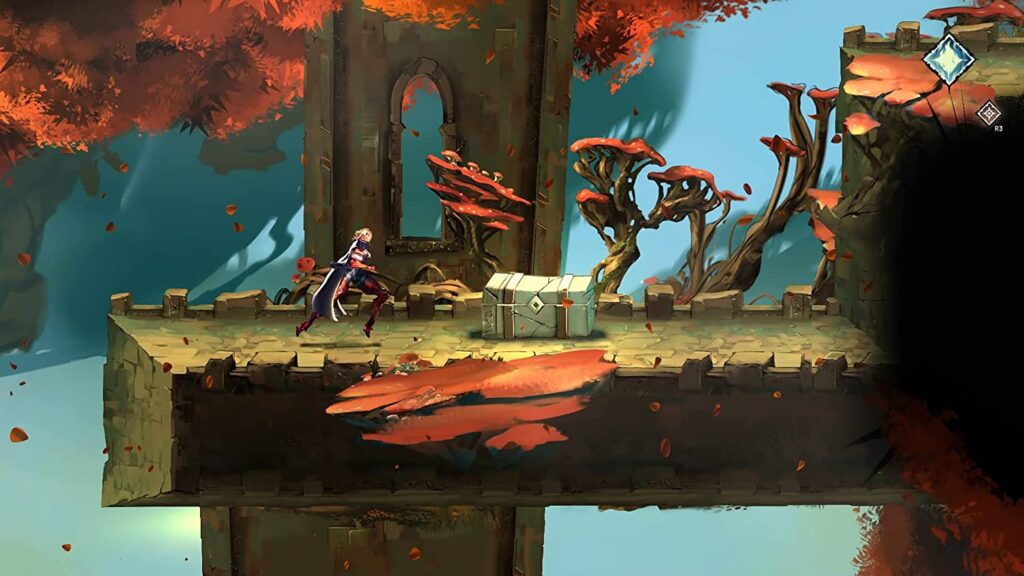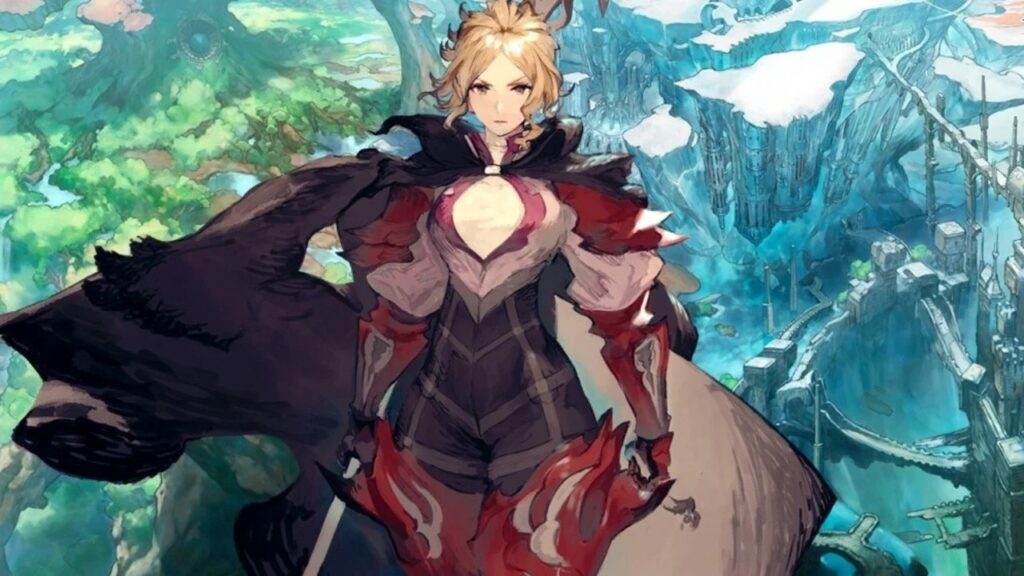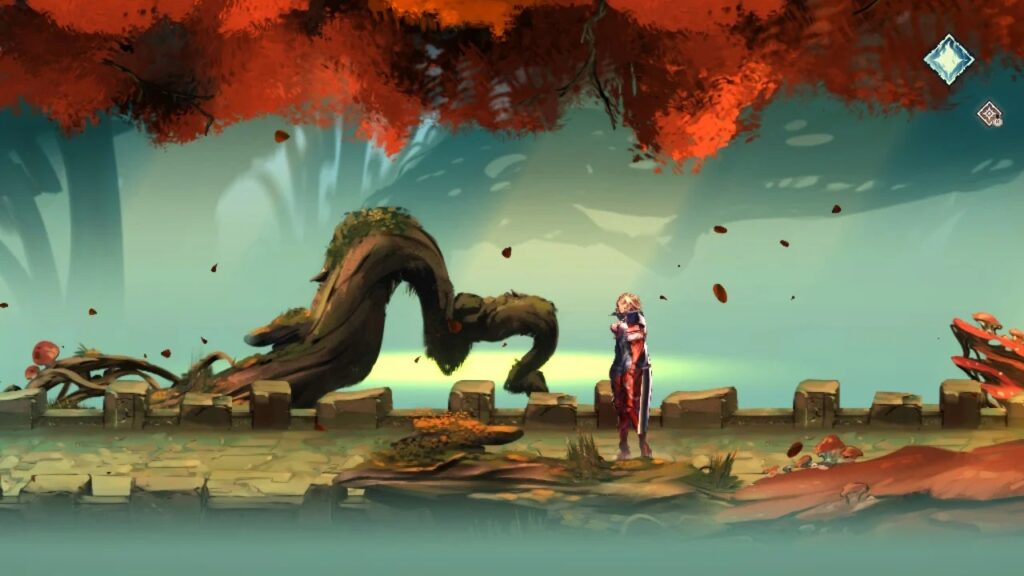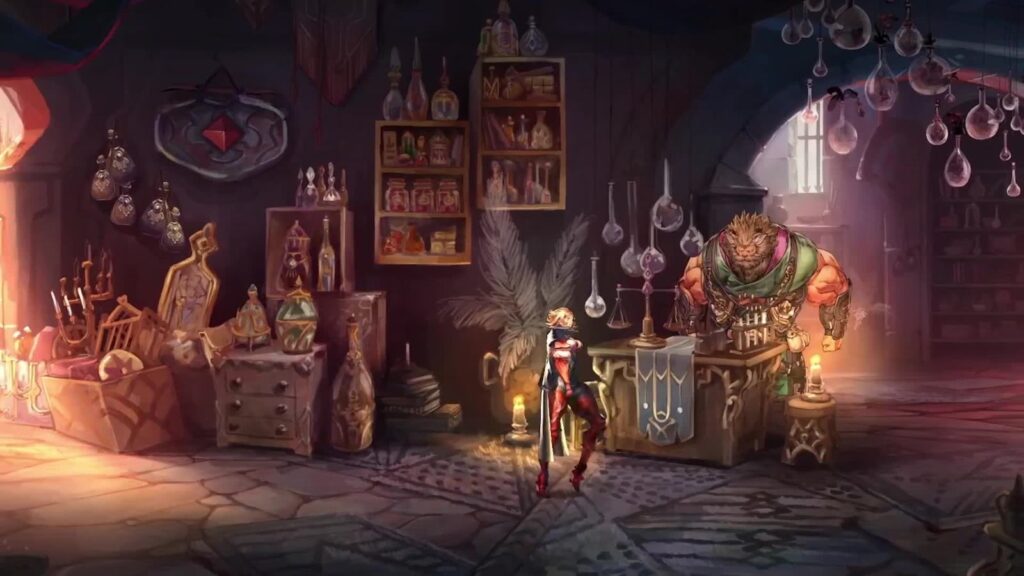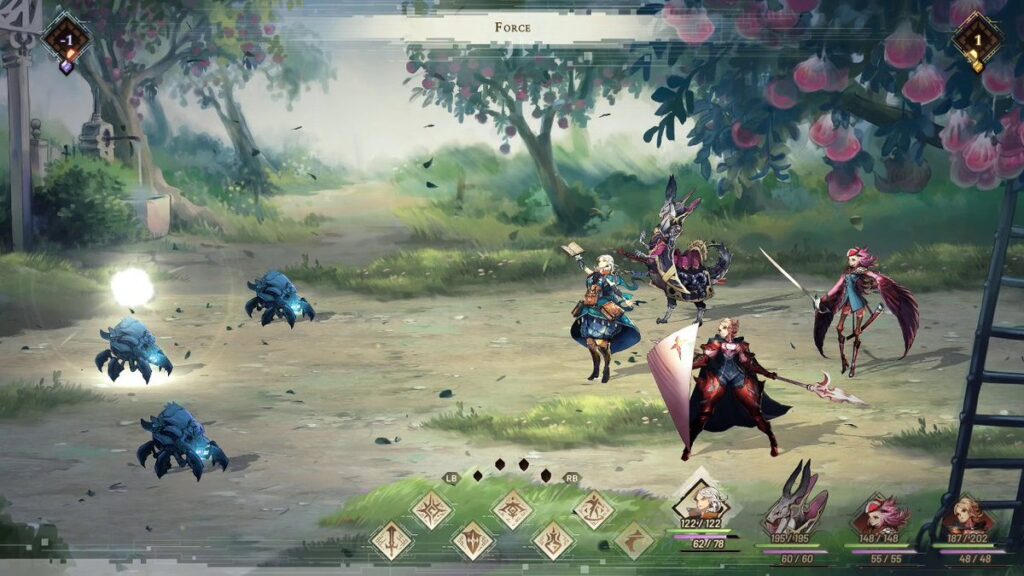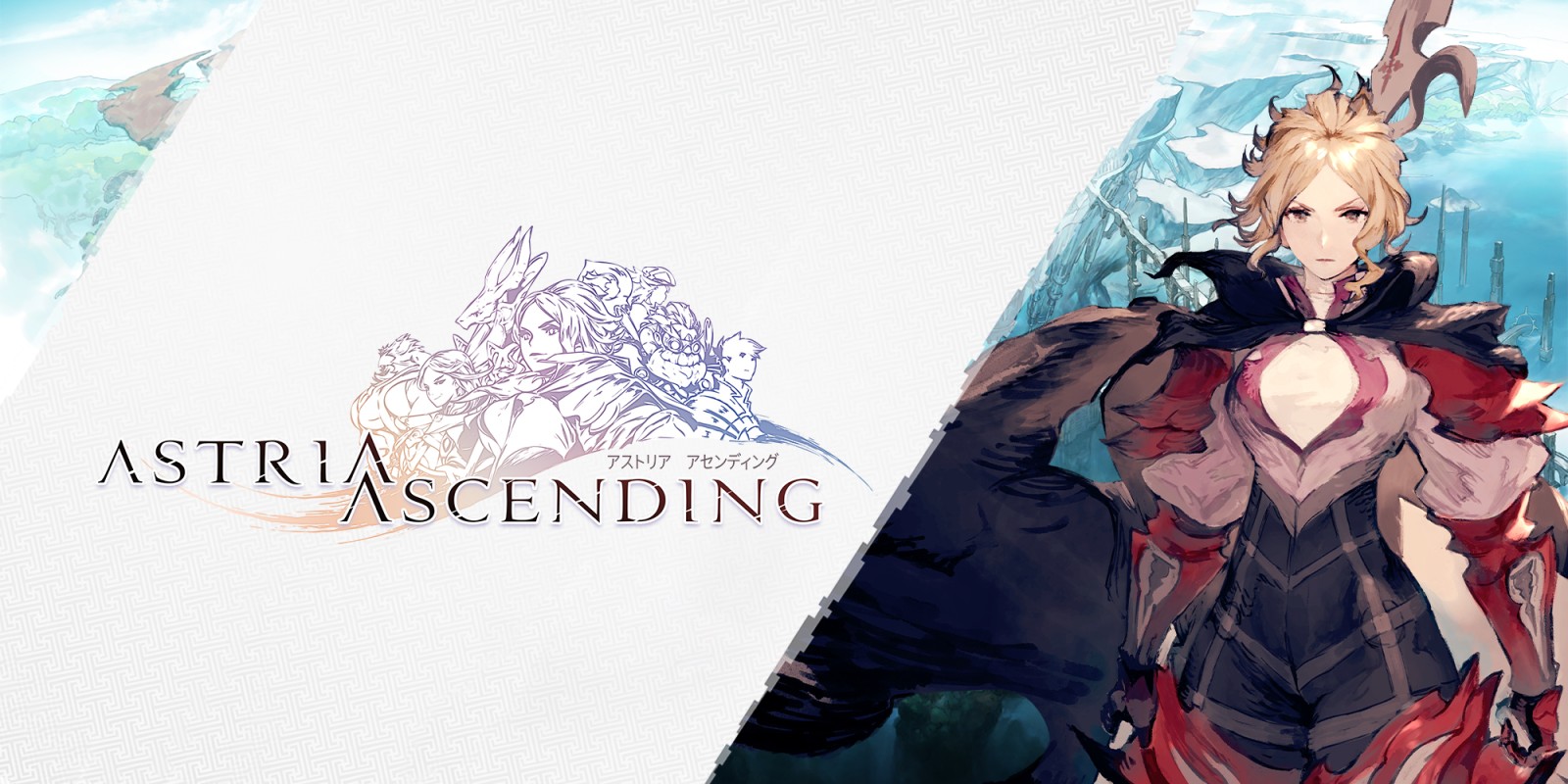
Astria Ascending (Switch)
A new turn based RPG arrives on Nintendo Switch this month in the form of Astria Ascending. The title from Artisan studios also makes its way to PS4/5, as well as Xbox series s/x, and sees you take control of a band of heroes to save the world from the noise with a power that limits there life to 3 years.
As I just mentioned Astria Ascending’s story revolves around chosen heroes known as Demi gods, a group of people made up of a mix of the races in Astria’s world, who are chosen to combat the threats to the “Harmony” at the cost of their own lives. The chosen only have 3 years to live before the ascension, and the members of the 333rd find themselves facing a threat that no one before has encountered just 3 months before there own ascension. Undeterred and set on seeing their duty through, they rise to tackle this new chain of events travailing the world whilst suppressing noise and uncovering the cause.
I found the main story interesting and charming thanks to the cast interactions and the overall idea that despite receiving great power. death or the end of their lives is very real. They have lives, family’s, friends, hopes and regrets, and they cast them off for what they believe is the highest honour. Seeing how the story progresses as these themes and beliefs are challenged made me care about each of the characters and the world they live in.
Visually the game uses 2d assets for the characters and the world design and I have to admit I loved every part of the design choices. The characters look great and have a surprising amount of detail, but what really stood out was the world itself. Despite the 2D artwork there’s a surprising amount of detail in the world thanks to the use of the layered artwork, if that alone wasn’t enough my appreciation for the artwork extends to the enemy models, and most importantly the bosses, and their transformations. Overall I have to admit to being presently surprised by the world that was created.
I will admit to being slightly annoyed by the constant loading in some areas of the game. Individually it’s not all that long, but it’s quite frequent at times and adds up. Outside of this one other issue I had was seemingly freezing in place at times, this was quite rare and passed after a little time – but was no less annoying when it did happen
Audio does a good job at setting the tone for the regions you visit while also working well for the sound effects in all areas of the gameplay. The voice acting is also a nice addition that wasn’t wholly expected. While this is mostly limited to the main cast, there’s a fair amount of actual voiced dialog throughout the game
Astria’s gameplay sees you travelling around the world suppressing the noise and uncovering the larger plot. This sees you experiencing multiple areas and dungeons while partaking in battles and exploring. At its core however it’s a turn based RPG, and this key point makes up most of your play time. While there are a number of side quest and hunts, + more to be done, ultimately it will come down to your team’s ability to stick increasingly stronger foes with the pointy end. For the most part battle is your typical affair and shouldn’t take much to get a handle on, unless you plan on raising the difficulty where strategy becomes much more of a focus, or lower the difficulty and just obliterate everything with little more than a stern look
One thing I did particularly like was the ability to switch your characters in battle. The fact there are 8 characters from the start of the game with their own class and skills made for some nice combinations to experiment with. This only expands later once the characters begin unlocking new classes, and you stock up enough SP to begin unlocking new abilities and stat bonuses, making for a nice amount of customisation for your party and having a fairly flexible team building system.
Battles as mentioned are turn based and you can use 4 of the characters at a time, with the ability to switch them out should you need to call in a healer or someone to exploit a weakness. Fortunately this is about as simple as it gets and by the time it becomes more of a core mechanic it should be second nature. Outside of the character switching mechanic battles are about as straightforward as they get, while there is a few gimmicks such as turning enemies into tokens and utilising focus, it mostly boils down to attacking and keeping your HP up.
Each of the characters can attack, defend or use items, as well as utilise skills. These skills are once more your standard affair for the most part, however skills tend to require a little more thought at later stages or difficulties due to most of them having elemental affects or buffs/debuffs, and play the role of building your focus meter. This system allows you hit enemy weaknesses to gain points to use more powerful attacks or even summon powerful creatures. This system is useful when utilised well, however not only can you lose points but enemies also have a focus gauge and on higher difficulties this system alone can make a vast difference in how you decide to play. Ultimately I enjoyed battles and didn’t find them to be repetitive or taxing thanks to the enemy variety and strategy required to tackle them.
Gameplay is both fun and accessible thanks to the ability to customise most aspects of progression and difficulty, from the multiple difficulty levels to the restrictions or bonuses you can toggle at will. Players should be able to mostly breeze through most of the content or challenge themselves depending on how they want to play. Exploration like most things in this game doesn’t require a particular amount of effort for the most part, there may be an occasion that you have to flick switches in a order or gain a ability, but nothing that’s really going to slow you down for more than a few moments.
Astria also has a fair amount of side content, from side quests that offer a mix of rewards and world building, to hunts that act as mini bosses and offer a little challenge and good rewards if approached when they first appear. My overall favourite side activity is J-star, a mini game played with monster tokens on a grid, with the tokens having multiple values determining their strength. Each player will take it in turns to flip the opponents token and the person with the most points at the end wins. It’s honestly a tad more complicated than that, but not something that’s going to require an advanced degree. If it helps, and you have experience, it seems to be based on triple triad final fantasy game. To be honest I spent a bit too much time playing and finding tokens for something that seems to serve as little more than a distraction, but it’s just to addictive
Despite it being one of my favorite activities, I have to point out the fact I did encounter a issue with J-star that seemed to stop me from backing out of challenges after initiating one. The B button to back out simply did not seem to work for me no matter how many times I tried, this locked me into some battles I couldn’t win when finding a strong opponent and caused losses of a few of my medals.
Overall Astria Ascending feels like a beautiful love letter to RPGs, not only did I fall in love with the visuals, but the gameplay is fun and boasts a fair amount of content. The characters have their own lives and strengths and shortcomings, despite being chosen they feel more human than superhuman. I have no issues recommending this title to my friends and those who enjoy old school RPGs. I’d love to give the game a 5 overall, however a few minor issues I encountered have caused me to lower it to a 4 as they are mostly mild annoyances, but sadly ones that hindered me on occasion.
Summary
An enjoyable RPG that offers up a couple of other ways to keep you entertained during the long journey.
OGUKJay
Latest posts by OGUKJay (see all)
- Digimon World: Next Order (Switch) - March 9, 2023
- Front Mission 1st: Remake (Switch) - December 9, 2022
- SD Gundam Battle Alliance (Switch) - September 7, 2022

